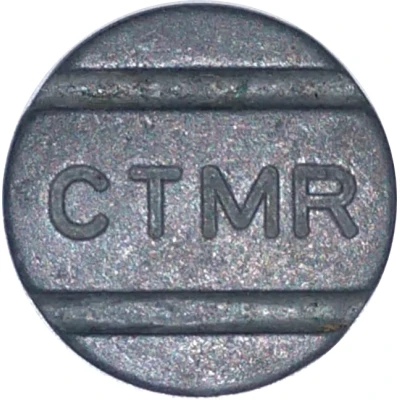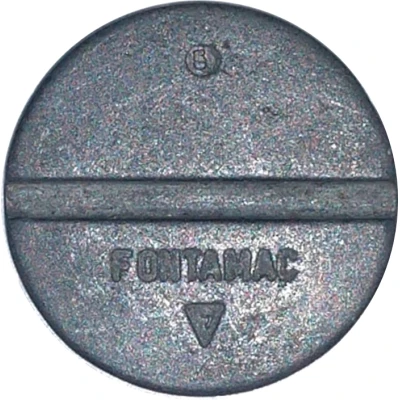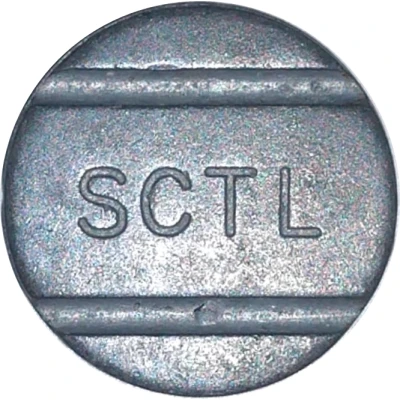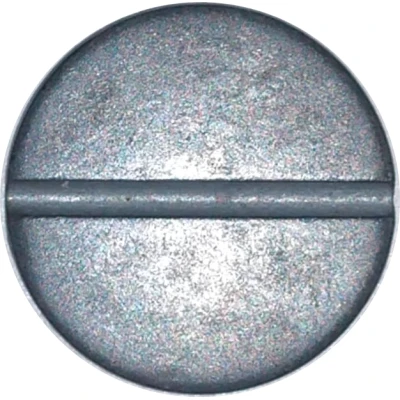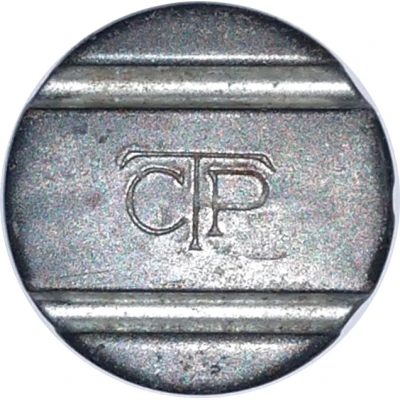
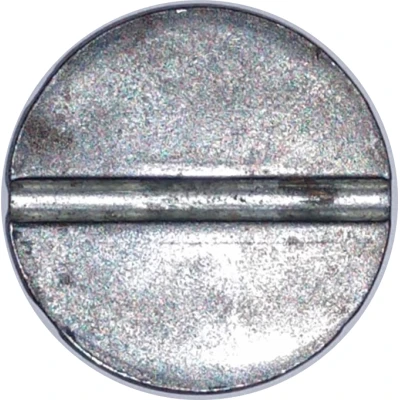

Telephone token - CTP 3 grooves ND
| Steel | 5 g | 23 mm |
| Location | Brazil |
|---|---|
| Type | Service tokens › Telecommunication tokens |
| Years | 1970-1997 |
| Composition | Steel |
| Weight | 5 g |
| Diameter | 23 mm |
| Thickness | 1.7 mm |
| Shape | Round with groove(s) |
| Technique | Milled |
| Orientation | Variable alignment ↺ |
| Demonetized | 1997 |
| Updated | 2024-11-13 |
| Numista | N#140005 |
|---|---|
| Rarity index | 93% |
Reverse
A horizontal groove centered on the part.
Edge
Plain
Comment
It was in Paranaguá that operated the first telephone in the state of Paraná, private property and commercial use, in 1886. In Curitiba lines were installed to operate in state government offices in 1887.
The first public telephony service concession in Curitiba was given to Duarte Moreira Catta Preta in 1891 and the company was later taken over by Olyntho Bernardi. Public telephony services were later granted in the municipalities of Ponta Grossa (1908) and Paranaguá (1911) to this same company: Companhia Telefônica do Paraná (CTP).
In 1925 the City Hall of Curitiba acquired the CTP and in 1927 sold it to the German group AEG (Allgemeine Elektricitäts-Gesellschaft) that created the company Cia Telefônica Paranaense. In 1936 the American group ITT (International Telephone & Telegraph) acquired the actions of the Germans, and took control of the company. In 1946 the Paraná telephone system was interconnected with the São Paulo network through the networks in the old north (via Ourinhos) and in 1951 the companies of Paraná and Rio Grande do Sul, both owned by ITT, were merged to form the National Telephone Company (CTN)).
The modernization of telephony in Paraná was only achieved in 1958, with the inauguration of the automated telephone system (which dispensed with the help of the telephone operators to complete connections) in the Travessa Jesuíno Marcondes building in Curitiba.
However, Union of Vitória and Rio Negro already had automatic service since 1953, since they were served by the company Catarinense and Maringá and Marialva since 1955, whose concession was of Sociedade Telefônica do Paraná Ltda (STP), a private company that had concessions in several municipalities in the northwest region of the state.
In the early 1960s the CTN concession expired in the cities of Londrina, Ponta Grossa and Paranaguá, and municipal companies were created to operate in these municipalities: Sercomtel, CPT and Cotelpa respectively.
Services offered to subscribers were unsatisfactory, especially in long-distance communications, but even local services were considered poor quality. In order to improve this situation, which had already dragged on for a long time, the Cia de Telecomunicações do Paraná - TELEPAR, a state-owned mixed-economy state enterprise, was created in 1963. It began operating in municipalities where there were still no concessionaires, mainly in the western region of the state, implementing interurban telephone routes and developing expansion and modernization plans. It also incorporated other concessionaires, such as the Paraná division of CTN, which operated in the metropolitan area of Curitiba in 1967 and STP in 1968.
Telepar was a reference company at the national level, having been the pioneer in Brazil in the implementation of modern systems, such as microwave, DDD, fiber optics, etc.
In 1975 Telepar was incorporated by the Telebrás group, but continued to expand, having acquired CPT (Ponta Grossa) in 1989 and Cotelpa (Paranaguá) in 1990. In 1998 with the privatization of the telephony sector, it became part of the Brazilian company Telecom, later acquired by the operator Oi.
